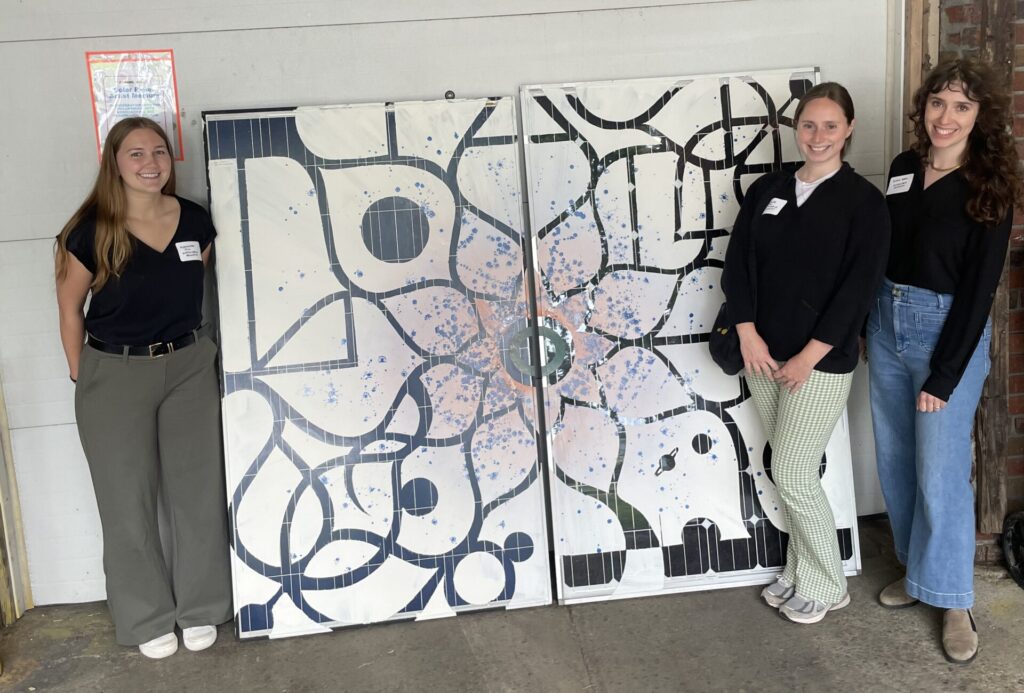What happens to solar panels after they’ve served their time on commercial properties? We visited Commercial Solar Panel Recycling’s facility to answer that question. Commercial Solar Panel Recycling is the only permitted solar panel recycling facility in New Jersey. We had the opportunity to see an impressive mix of technology, sustainability, and creativity that is solving the challenge of what to do at the end of a panel’s life.
Why Are Panels Recycled?
Solar panels arrive at this facility for several reasons:
- Damage from natural disasters like hurricanes
- End-of-life retirement, after 25–30 years of use
- Upgrades, when newer, more efficient technology makes it worthwhile to swap them out
But recycling isn’t the first step in the process.
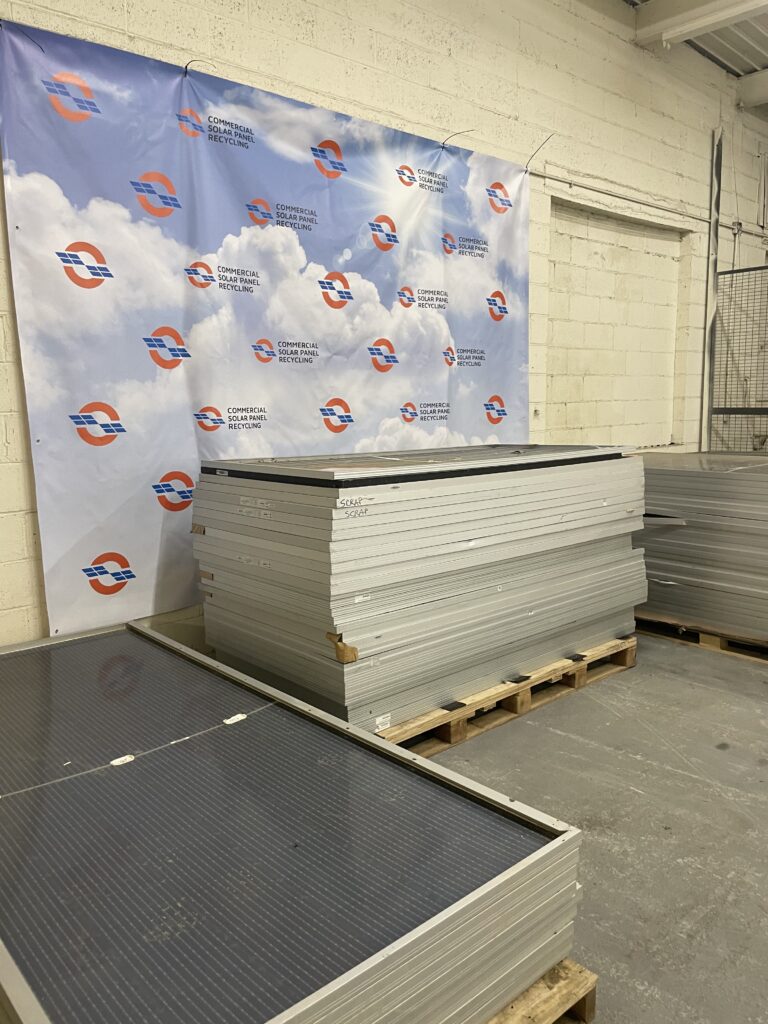
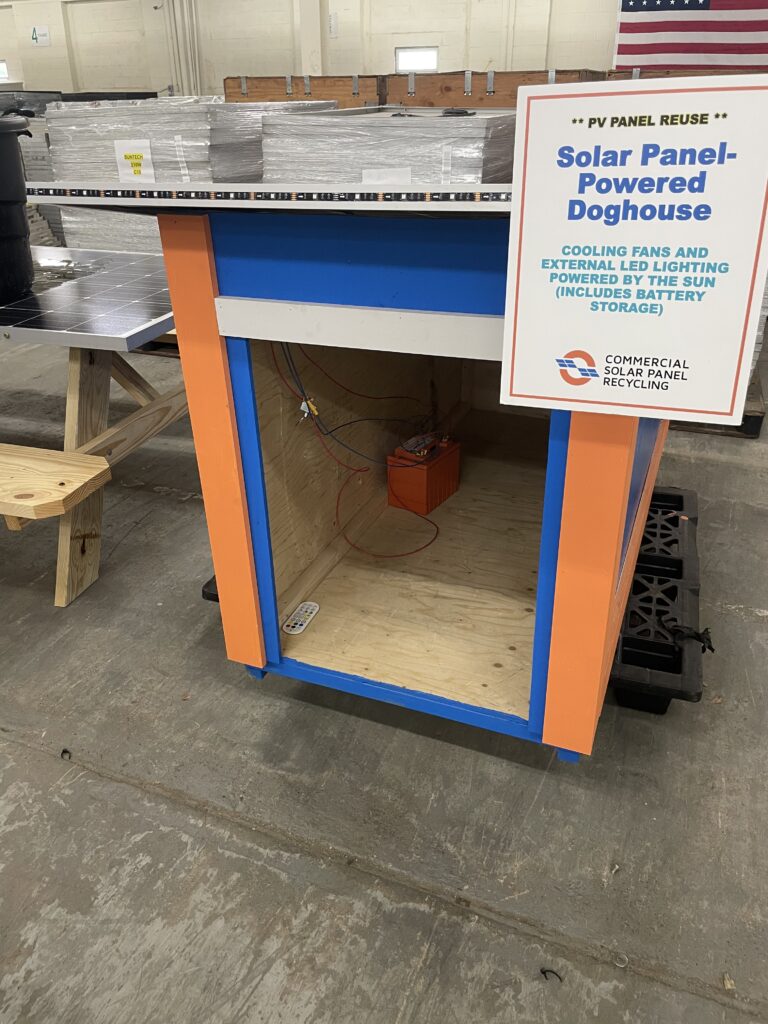
First, They Reuse
Before any panel is broken down, it’s tested for function and safety. One critical step is checking for cadmium, a toxic heavy metal sometimes found in older panels. If a cadmium-containing panel slips into the recycling process, it could contaminate the entire facility, so strict screening is essential.
Working panels are resold to people who only need a few matching modules, like off-grid hobbyists or preppers. Panels that aren’t quite efficient enough for resale? That’s where the creativity kicks in.
We saw a solar-powered dog house that uses the panel for shade and cooling. Staff also told us about a more ambitious project, a solar picnic table designed to charge your phone. It was a great idea until they discovered it got so hot, it doubled as a frying pan!
Breaking It Down
Once the reuse options are exhausted, it’s time to break the panels down. Here’s how:
1. Junction Boxes and Cables
Solar panel junction boxes allow for the safe connection between the panels and the rest of the electrical system. These components are manually removed and are then recycled downstream and reintroduced into the manufacturing stream.
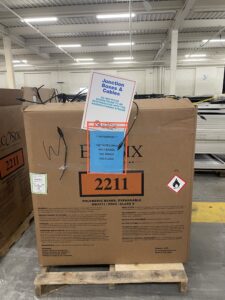
2. Aluminum Frames
If the frames are held together with screws then those need to be manually unscrewed, which is a very labor intensive process. But if they’re press-fit, then it’s time to call in Big Blue, a two-person machine that pulls the frames off using mechanical “blades.” Once the frames are removed, the aluminum is melted down and reused as raw material.
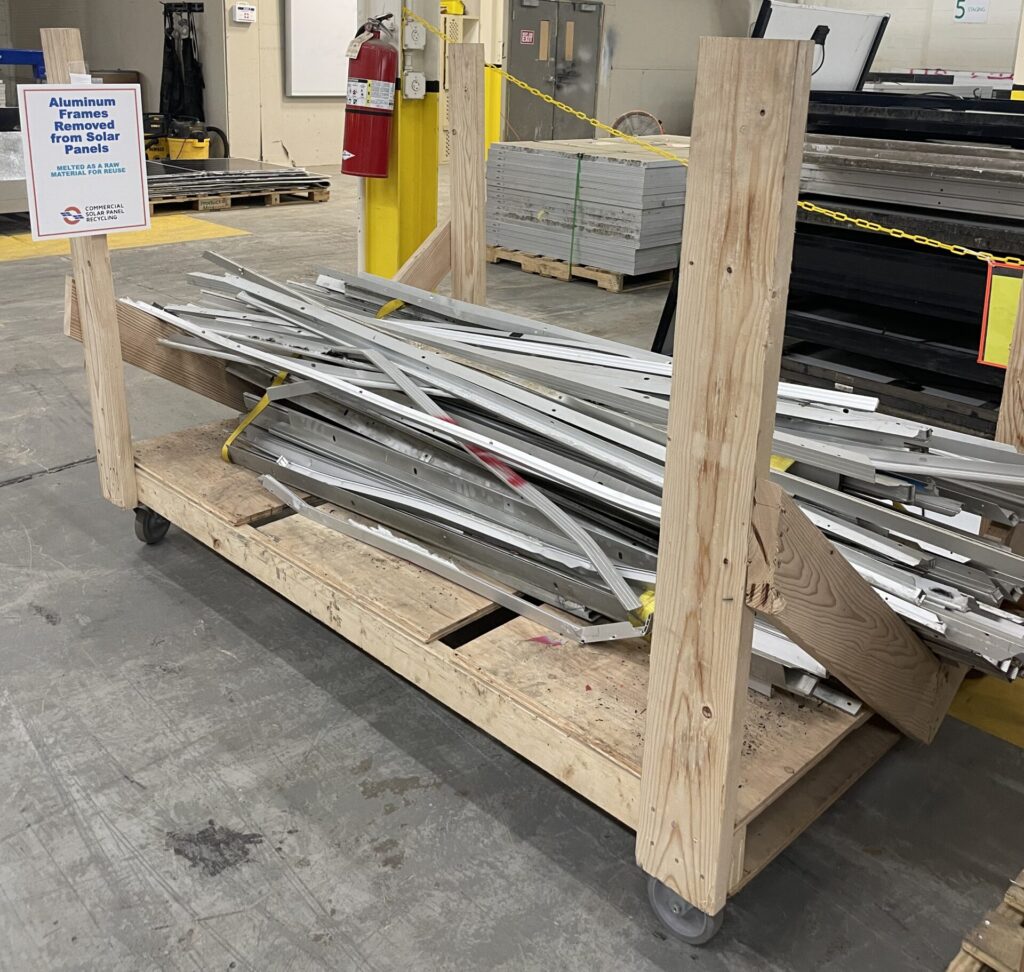
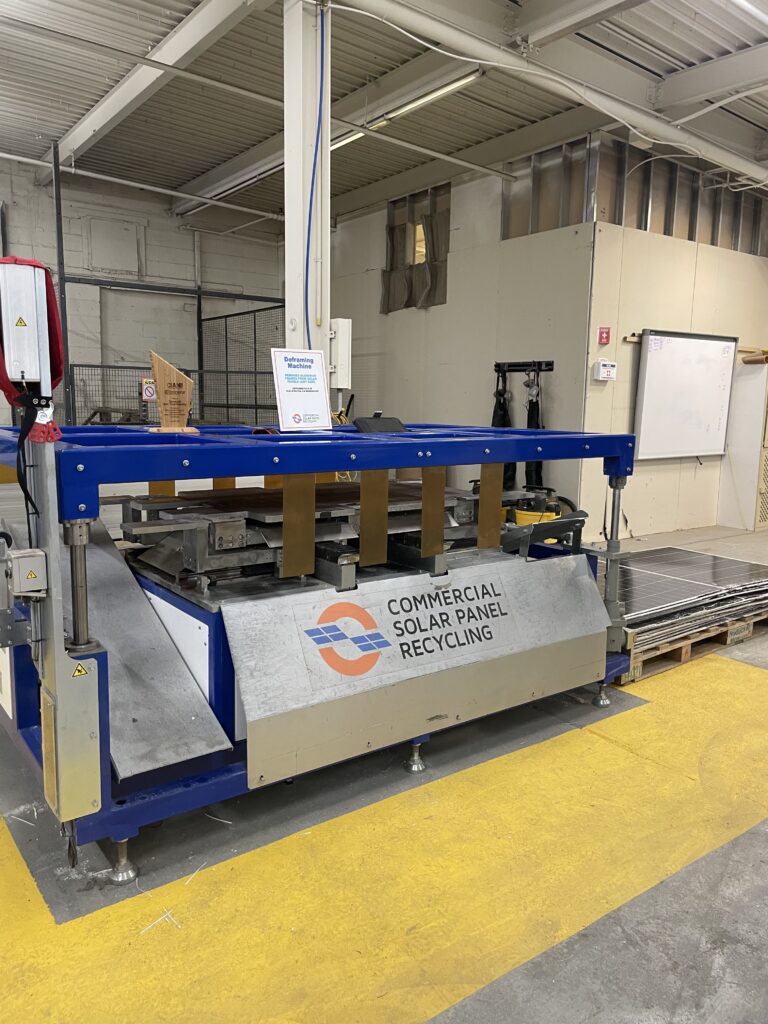
3. Glass Panels
The glass itself is shipped to their facility in New York, where it’s crushed into sand. That sand has many uses, from bike lane abrasives to colored brick components. It’s a creative way to put old panels to new use.
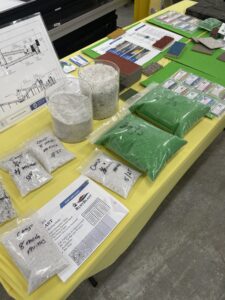

4. The Leftover Bits
The remaining materials are a paperlike layer fused with bits of glass and solar cells, and are harder to recycle. But that hasn’t stopped this team. They’ve started grinding up this material and blending this with plastic to make garden pavers, and are testing ideas for planters and other outdoor products.
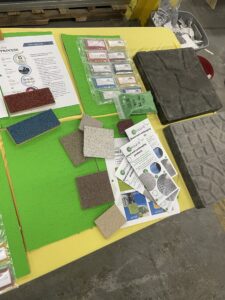
Why It Matters
This entire process keeps 95–98% of each solar panel out of the landfill.
That’s a big deal. Solar panels take at least 150–200 years to break down and when they do, they can release lead and other toxins. One panel might not seem like much, but think about hundreds of panels coming off a single commercial rooftop. Proper disposal is critical for health, safety, and sustainability.
What Can You Do?
Be Informed: Read about NJ SB 3399, the proposed bill to mandate end-of-life recycling for solar and PV facilities — which aims to reduce landfill waste and promote a circular economy.
Get Solar on Your Rooftop: Going solar has so many benefits such as cost savings, increased home value, resilience when combined with batteries, and reduced carbon emissions. One of the biggest questions about solar has been, “What happens when they reach the end of their life?.” Solar panels are recyclable but the recycling infrastructure is still developing. Despite this infrastructure for recycling still being developed, solar panels have less waste than traditional fossil fuel sources of electricity and it is less toxic than some of the other fossil energy waste.₁
Subscribe to Community Solar: If you rent, have too much shade, or can’t install your own system, community solar allows you to subscribe to a shared solar project and save up to 20% on your electric bill without panels on your roof.
References:
